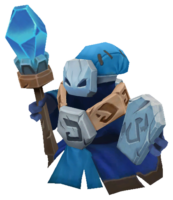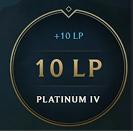LoL Stats Benchmark Overview: Rank, Gold, Age & More
What is the average rank, average gold, average game time, average players, average cs per rank, average lp gain, average age of players in League of Legends?
Leveraging LoL Average Stats for Personal Growth
Welcome Summoner! While climbing the ranks in League of Legends is a deeply personal journey, comparing your performance against established average player statistics can provide invaluable insights. These benchmarks aren’t just arbitrary numbers; they are a window into the current meta, player habits, and areas where you might excel or need improvement. Let’s dive into how you can interpret and utilize these average stats to sharpen your gameplay.
Understanding Your Rank (Average: Silver II)
The “Average Rank” often represents the median player skill level. If you’re above Silver II, you’re performing better than half the player base. If you’re below, it highlights an opportunity to improve fundamental skills. Use this average to set realistic goals. Are you aiming for Gold, Platinum, or beyond? Knowing the average helps you gauge your position in the broader competitive landscape.

Tip: Don’t just compare your rank to the average. Focus on improving your game fundamentals to consistently perform above the average of your current rank to ensure a steady climb.
Gold & CS per Minute (Average: 12.5k Gold, ~6.5 CS/min)
Gold is the lifeblood of League of Legends, and Creep Score (CS) is its primary source. Average gold earned reflects your overall economic efficiency, while CS per minute is a direct measure of your farming prowess. If your CS/min is consistently below the average, it indicates missed opportunities for farm, which directly translates to less gold and weaker item timings.

Actionable Insight: Practice last-hitting in custom games. During actual matches, aim to hit specific CS benchmarks (e.g., 80 CS at 10 minutes) and minimize missed farm by recalling efficiently and understanding wave management.
KDA & Damage Dealt to Champions (Average: 2.8 KDA, 18.5k Dmg)
Your Kill/Death/Assist ratio (KDA) highlights your participation in combat and your survivability. While a high KDA is often desirable, it’s crucial to remember that it’s a consequence, not a goal in itself. Similarly, “Damage Dealt to Champions” shows your direct combat contribution. If your damage numbers are low compared to the average for your champion or role, it might indicate passive play or inefficient trading.

Focus: Instead of chasing KDA, focus on impactful plays and efficient damage output. Are you present for key team fights? Are you making effective trades in lane? Your damage should reflect your role’s contribution to combat.
Win Rate & LP Gain (Average: 50.5% WR, ~18 LP Gain)
A win rate hovering around 50% is typical for a player in their correct Elo, as the matchmaking system aims for balanced games. Consistent LP gains (e.g., +18 LP per win) indicate a healthy MMR and progress. If you’re gaining significantly less LP than the average, it might suggest your MMR is lower than your visible rank, requiring a sustained winning streak to balance out.
Key Takeaway: Don’t obsess over individual game LP gains. Focus on long-term consistent wins. A solid 52-55% win rate over many games will steadily move you up the ladder.
Vision Score (Average: ~25 Vision)
Vision score is a crucial, often overlooked, metric. It measures how much vision you provide and deny throughout the game. A higher vision score contributes significantly to map control, preventing ganks, securing objectives, and setting up picks. If your score is below average, it’s a clear area for improvement, especially for supports and junglers.

Strategic Tip: Place wards proactively in key areas before objectives. Don’t forget to buy Control Wards and use your trinket. Denying enemy vision by sweeping also significantly contributes to your score and your team’s safety.
Game Time, Active Players & Player Age (Average: ~28.5 min, 180M+ MAU, ~26 Years)
- Average Game Time: This average indicates the typical pace of a League of Legends game. Shorter games might suggest faster snowballing or surrender rates, while longer games often point to more even matches or scaling compositions. Understanding this can help you adapt your champion picks and strategies.
- Average Active Players: This showcases the immense global reach and enduring popularity of League of Legends, highlighting the vast community you are a part of.
- Average Age of Players: This demographic insight offers a general understanding of the player base. While not directly actionable for gameplay, it provides context about the community you interact with.

Interesting Fact: League of Legends’ consistent player base over the years makes its average statistics highly reliable for benchmarking.
Conclusion: Using Averages for Personal Improvement
Average statistics provide a valuable lens through which to view your own performance. They are not absolute measures of skill, but rather indicators of where you stand in relation to the wider player base. By comparing your numbers to these averages, you can:
- Identify Weaknesses: Pinpoint specific areas (e.g., farming, vision, damage output) where you might be lagging.
- Set Goals: Establish measurable targets for improvement (e.g., “I will increase my CS/min from 5.5 to 6.0”).
- Track Progress: Monitor how your stats evolve as you implement new strategies or practice specific skills.
Ultimately, leveraging these average data points allows you to move beyond anecdotal experience and embrace a data-driven approach to mastering League of Legends. Good luck on the Rift!






